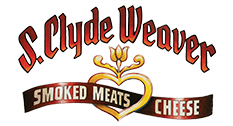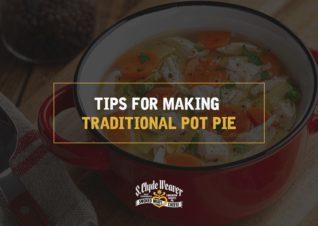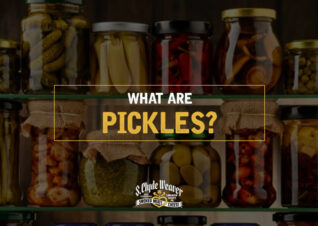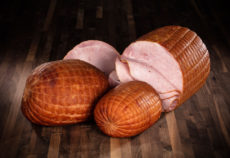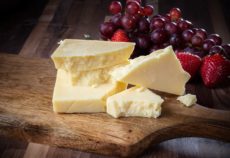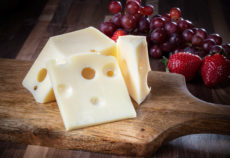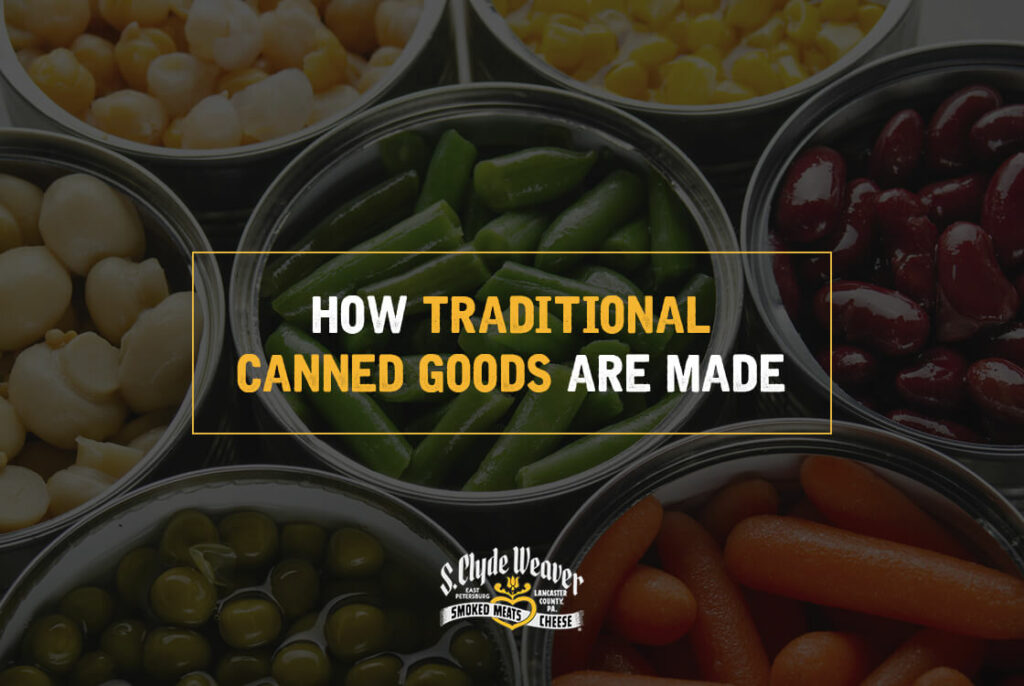
With its peaceful and nostalgic atmosphere, friendly residents, timeless natural scenery and various historical attractions to enjoy, it’s no wonder people from all over the world come to visit Lancaster County in Pennsylvania. Whether checking out vintage trains at the Railroad Museum of Pennsylvania, shopping at outlet malls, learning how to make ice cream at the Turkey Hill Experience or touring the Amish village in Pennsylvania’s Dutch Country, visitors of all ages can find an activity to enjoy.
Lancaster County’s farming and produce industry has played a significant role in the region’s success since the 18th century, and it only continues to thrive. Its fascinating food-making and packaging processes are highly worth exploring, and we aim to help you do just that.
With this complete guide to traditional food preservation in Lancaster, Pennsylvania, you can learn about the different dishes common to the area and how each is made. We’ll begin by discussing some more generic canned items, then move on to specific foods and canning processes used in Lancaster. Let’s begin!
How Is Food Canned?
You’re likely familiar with canned foods if you’ve ever stepped foot in a grocery store. This preservation method involves processing foods and beverages before sealing them in airtight containers such as tin cans, steel cans or mason jars.
Canning preserves freshness and increases shelf life by destroying microorganisms that cause spoilage. You boil the food in the can to kill this bacteria, then seal it to block any new bacteria from entering. Because the food in the can is sterile, it can remain fresh for an extended time. Most fruits, vegetables, meats and dairy products are packaged in tin cans, while sodas and other beverages are typically stored in aluminum cans, which tend to be lighter and more rust-resistant.
The canning process can vary by food product. For example, vegetables and fruits may have to be pitted or peeled or have their stems removed before canning. Certain veggies may also undergo heat treatment for air removal and more effective packaging. Acidic vegetables and juices are typically sterilized before canning.
Meanwhile, certain fish and meats may need to be cooked to soften the flesh and separate it from bones before being condensed into cans. Some types of fish also must be shelled before packaging.
Most canning factories are located within a few miles of harvesting locations so foods can get packed during peak freshness. While fruit and vegetable canning facilities are typically close to fields and farms, seafood canning facilities are usually close to the docks where fish are caught.
Below are some of the most common types of canned foods and beverages:
- Fruits: pears, peaches, pineapple, mandarin oranges, fruit cocktails and pink grapefruit
- Vegetables: corn, mushrooms, green beans, carrots, asparagus, beets, pumpkin, tomatoes, pickles and okra
- Meats: ham, bacon, pork, chicken breast, beef and turkey
- Fish: tuna, shrimp, sardines, salmon and anchovies
- Beverages: soda, alcohol and juice
- Dairy: evaporated milk
- Dressings: olive oil and balsamic vinegar
- Spreads: jams and preservatives, relish, butter and salsa
- Beans and legumes: baked beans, pinto beans, kidney beans, chickpeas and lentils
- Soup: noodle soup and barley soup
While this is the general canning process for mass-produced foods in supermarkets and grocery stores, have you ever wondered what more traditional canning processes entail? One of the best things about visiting Lancaster, Pennsylvania is the opportunity to try traditional Amish dishes made from authentic locally-grown ingredients. Fresh foods from Amish farms provide a comforting, nostalgic tasting experience you simply can’t find with commercial foods.
A Brief History of Lancaster’s Farming Industry
Lancaster County is known as the heart of Pennsylvania’s Amish population, a hardworking group that has farmed the state’s land since the mid-18th century. Because Lancaster County is home to some of the nation’s best farmland, it has more farms than any other county in the state. It’s considered Pennsylvania’s top producer of cattle, horses, poultry, eggs, milk and tobacco.
When European colonists first settled in Pennsylvania, they brought various domesticated animals, including sheep, cattle and fowl. Originally, farmers raised cattle primarily for personal and local use. But by the late 1700s, they began pasturing beef cattle for sale in Philadelphia’s growing market.
By the 1850s, Pennsylvania railroads had begun transporting grass-fed cattle from western states. Lancaster farmers would purchase relatively cheap cattle, feed them locally-grown corn and sell them in the city market. By 1870, Lancaster County would become Pennsylvania’s biggest producer of beef cattle.
When strolling through Pennsylvania’s Dutch Country, you’ll likely see a variety of livestock and animals roaming the Amish farms, from cattle to pigs and hens. Additionally, you can enjoy a delicious variety of Amish specialties from Lancaster’s local stores, from smoked cheeses and meats to sweet Dutch apple dumplings.
Popular Amish Dishes in Lancaster County
Today, the Pennsylvania Dutch in Lancaster County continue to raise cattle, grow their own food on farms and serve hearty family-style dishes — the true epitome of comfort food. The region’s gardens grow a variety of traditional ingredients, including potatoes, carrots, tomatoes, sweetcorn, peas, celery and other fresh produce. In addition, traditional Amish dishes are often made with cloves, thyme leaves, bay leaves and other fresh seasonings.
Together, these fresh, locally-sourced ingredients create delicious meals, many of which are enjoyed inside and outside of Pennsylvania Dutch Country. Here are some staple Amish dishes and foods common to the Lancaster area:
- Scrapple: Commonly referred to as “poor man’s bacon,” scrapple is a favorite breakfast and brunch meal in Lancaster County. Carrying both Dutch and German origins, this dish consists of finely minced ground pork, fresh spices and buckwheat or cornmeal flour. It’s essentially a form of meat pudding.
- Apple butter: This highly-concentrated applesauce originated in the Middle Ages from Limberg — which is now Belgium and the Netherlands — and Rhineland, which is present-day Germany. Today, it remains a favorite spread in Lancaster. Apple butter is created by slow-cooking apples with water or cider until the sugar in the apples carmelizes. This forms a deep, rich brown color and provides a longer shelf life compared to regular applesauce.
- Chow Chow: Chow Chow is a tangy, sweet relish typically made from fermented vegetables such as onion, bell peppers, cabbage and green tomatoes. Its name is believed to have originated from the Chinese, who commonly shipped pickles and spices to England and the United States.
- Chicken pot pie: While you can find chicken pot pie nearly anywhere in America, the most iconic version of this dish is based in Lancaster’s Pennsylvania Dutch Country. The Pennsylvania Dutch add their own unique twist to this dish — noodles — for an extra savory flavor and texture.
- Shoofly pie: This popular Pennsylvania Dutch cuisine is a gooey molasses-based pie that slightly resembles coffee cake. Though it’s commonly enjoyed as a dessert, shoofly pie was traditionally served as a breakfast meal alongside hot coffee. In addition to molasses, it’s typically made with brown sugar, flour, egg, water, cinnamon and other spices.
- Apple Schnitz pie: Apple Schnitz pie is a decadent, delicious Amish dessert commonly found in Lancaster County, usually composed of spices and cooked dried apples. The German word “Schnitz” translates to “carve” or “slice” and is typically used to describe dried slices of fruit. Apple Schnitz pie also contains a thick apple butter filling.
- Homemade doughnuts: Another staple dessert in Lancaster County, Amish doughnuts are made from basic baking essentials such as flour, sugar, milk, eggs and yeast. However, their preparation method sets them apart from regular doughnuts. Amish doughnuts use a special kneading and stirring method to make them extra light and fluffy, giving them a unique texture and flavor.
- Dutch cabbage rolls: Cabbage rolls are a culinary tradition in Pennsylvania Dutch Country. They’re typically considered a Sunday or “special occasion” family meal. This dish consists of multiple fillings — meats, veggies, herbs, sauces and spices — wrapped in cooked cabbage leaves.
- Cream chipped beef: “Chipped beef” refers to dried beef that has been pressed, salted and sliced into thin pieces. Sometimes, the beef is smoked for additional flavor. Cream chipped beef is a dish composed of dried beef coated in a creamy white sauce, which is typically made from milk, flour and butter. You can also serve it over eggs, potatoes or toast. With the perfect combination of savory flavors, this traditional Amish dish simply melts in your mouth.
Traditional Lancaster PA Canned Goods
Traditional Amish beliefs and practices often prevent the Pennsylvania Dutch from using modern electrical appliances. This includes refrigerators and freezers, which are either rarely or never used. If any Amish communities do use these appliances, they’re typically propane or natural gas-powered.
Due to limited electricity for food storage, the Pennsylvania Dutch community has adapted to producing and preserving foods using traditional methods — or canning — taught by their ancestors. Preserved Amish foods have served as “survival foods” as they can be stored for long periods and used in hostile environments and winter conditions.
Amish homemakers are responsible for storing and preserving surplus foods. To prepare for the harsh winter months when garden production is lacking, Amish women can up to several hundred jars of vegetables, fruits and meats every year. At the beginning of fall, they scrub, sterilize and fill glass jars with food before storing them in cellars.
Now that we’ve covered a brief history of this area and its popular Amish dishes, let’s explore some traditional Lancaster canned foods and how they’re made.
1. Apple Butter
Despite its name, apple butter actually doesn’t use any butter at all. Rather, this name comes from its buttery, smooth texture. It’s delicious to enjoy on its own or spread over bread, biscuits and muffins.
This rich, sweet spread is created by cooking pureed apples for an extended period. During this process, the sugars carmelize as the puree cooks, resulting in the deep flavor and dark brown color that we briefly discussed earlier.
Below are the basic steps to making apple butter:
- Slice apples into quarters without coring or peeling them, but be sure to cut out any damaged parts.
- Add apples, water and vinegar into a large covered pot, then cook until they’re soft. Remove this mixture from heat.
- Push the apples through a food mill into a large bowl to mash them thoroughly.
- Add sugar, lemon zest, cinnamon, allspice, ground cloves, lemon juice and a pinch of salt to the mixture.
- Cook the mixture and stir continuously until it is smooth, thick and dark brown in color.
After the apple butter is complete, it’s time to can it. The first step is sterilizing the glass jars. Depending on what the particular community allows, an Amish homemaker may use a generator or propane-powered stove to heat water for sterilization. Then, she’ll pour the apple butter into the hot, clean jars, sealing them tightly to preserve the mixture.
In addition to apple butter, you can find a wide range of other delicious summertime preservatives in Lancaster County. Fresh garden-grown fruits such as strawberries, peaches, grapes, plums and raspberries create a delicious variety of jams and jellies to enjoy on bread, toast, pancakes or simply on their own. If you ever visit the Pennsylvania Dutch Country, consider trying one of these sweet spreads to experience the rich flavors for yourself!
2. Chow Chow
As we briefly discussed earlier, Chow Chow is a sweet relish made from a variety of fermented vegetables. While the types of vegetables used can vary, some common ones are tomatoes, peppers, cabbage and onion. Below are the general steps to making Pennsylvania Dutch Chow Chow:
- Sterilize and clean the glass jars.
- Cook each vegetable separately in some lightly salted water.
- Remove each one from heat and plunge it into an ice water bath, then drain with a colander.
- Layer the drained vegetables into a large bowl, then toss them by hand or with a wooden spoon to mix well. Drain any access vegetable water from the bottom of the bowl.
- In a large kettle or stockpot, bring the pickling syrup ingredients — cider vinegar, sugar, water, celery seed, salt and mustard seed — to a boil, stirring to dissolve the sugar. In some cases, turmeric is added for additional flavor.
- Carefully add the vegetable mixture to the boiling pickling syrup, then continue to boil for a few more minutes.
- Ladle the veggie mixture into sterilized jars, then add the syrup. Seal each jar tightly and store.
Generally, days 3-5 of fermentation tend to offer prime Chow Chow flavors. During this period, the vegetables have fully settled and paired with the brine.
3. Horseradish
Horseradish is a common spice in the Pennsylvania Dutch community. It has a distinctive hot flavor that comes from isothiocyanate, a compound that generates heat when oxidized by saliva and air. This is why people commonly claim that this hot sensation helps clear out their sinuses.
However, you can only experience this aroma and flavor when the horseradish root is properly ground or grated. During this stage, isothiocyanates release as the root cells are crushed. Adding in vinegar blocks this reaction to help stabilize the flavor. The sooner you add the vinegar, the milder your horseradish will taste. Once the spice has achieved ideal flavor and texture, it’ll be time to store it in an airtight container for future use.
4. Pickles
Pickles are made by soaking cucumbers in a brine mixture consisting of salt, vinegar and spices. The vinegar acts as a preservative for the pickles and gives them a slightly sour flavor. Sugar or other sweeteners are also added to the pickles for a sweet, tangy taste. Ingredients such as cinnamon, dill weed, allspice, garlic, cloves and black pepper can be added to produce other unique flavors.
While pickles in grocery stores are typically made with advanced machinery, colorants, preservatives and stabilizers, the Pennsylvania Dutch stick to a more traditional method. They use fresh, locally-grown ingredients and hand soak the pickles in a brine solution before packaging and storing them in glass jars.
When making cucumber pickles, for instance, they’ll typically start by peeling the skins from the cucumbers before slicing them very thinly. They’ll soak the cucumbers and some sliced onions in brine and cover them with salt. They may also add ingredients like pepper, mustard and olive oil for extra flavor. These ingredients can vary depending on the type of pickle — there are many varieties such as bread and butter and dill.
Pickling differs slightly from canning as it doesn’t require the food to be as sterile before sealing. The brine helps destroy harmful bacteria and microorganisms to preserve the pickles. However, fermentation pickling is a little different. This process relies on natural bacteria that prevent the development of harmful microbes when deprived of air. It converts the carbohydrates and sugars into acid, which helps preserve the pickles.
5. Sauerkraut
Sauerkraut is an Amish favorite. Similar to Chow Chow, the sauerkraut-making process involves fermenting cabbage thoroughly before sealing it in airtight containers. It uses a type of picking known as lactic acid fermentation, a process also used for traditional cucumber and kimchi. To prepare for fermentation when making sauerkraut, they start by finely shredding the cabbage before layering it with some salt. They store the sauerkraut in crocks, then leave it on the porch to ferment for 7-10 days before canning and storing.
6. Pears
Like many other fruits, the Pennsylvania Dutch harvest fresh, sweet pears from produce gardens to enjoy on their own or use to make pies and pastries. This section will explore a traditional method of preparing and storing pears, also known as “pickled pears.”
First, here are the general ingredients used to make pickled pears:
- 14 lbs. pears
- 1 qt. apple cider vinegar
- 6 lbs. sugar
- 1 tsp. whole cloves
- 1 tsp. cinnamon stick, broken into pieces
Generally, the pickled pear-making process starts with slicing and removing the cores from the pears. Then, they’ll remove the peels.
Preparing the spices is the next step. They’ll add the cloves and cinnamon to a small cheesecloth bag, then combine this mixture with a pot of vinegar and sugar. The next stage is boiling this mixture, then adding the pears and cooking them until they’re soft and tender. Typically, the fruit will take on a lighter, clearer appearance as it tenderizes.
Once it’s ready, they’ll remove the pears with a spoon and place them into clean, sterile glass jars. They’ll continue to boil the remaining liquid — or syrup — until it thickens, then pour it into the jars of pears. To finish, they’ll seal the jars tightly and store them.
We hope you’ve enjoyed learning about the canning and storage process of different Pennsylvania Dutch cuisines. This list contains merely a few examples of the many canned fruits, vegetables, jams and meats in Lancaster County made from authentic, locally-grown ingredients. If you ever visit the area, consider getting a fascinating glimpse of this process for yourself!
Shop Lancaster Favorites at S. Clyde Weaver
Lancaster County has a delicious, authentic variety of sweets, snacks, condiments and more. Why not experience some of these rich flavors for yourself? At S. Clyde Weaver, we craft our products from traditional recipes so you can bring the natural flavors of Lancaster County into your own home. From Chow Chow to shoofly pie to rich apple butter, we have a wide selection of classic Pennsylvania Dutch items to choose from.
Experience authentic Amish flavors when you shop online with S. Clyde Weaver. Browse our selection of Lancaster favorites and start stocking your pantry today!
